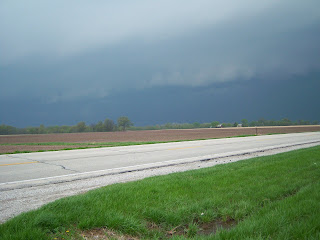I haven't got around to posting anything about the new rig. I replaced the FT-767GX with a Yaesu FT-450AT.
The speaker that looks as if it came with the rig is an old center channel speaker from a Sony surround sound system. Maybe Yaesu should get with Sony, of course that would make it $100 or more.
As you can see, I use Ham Radio Deluxe to control the rig. Some of the features are not supported but I did write macros that makes them functional. The menu settings are better accessed by HRD than via the radio and the dimmer, mic gain, volume, DSP, IF shift, meter selection, squelch, RF power, RF gain, keyer speed, QSK delay, VOX delay, and Vox gain are all able to be set on sliders in the software. Even the software from Yaesu works well, almost like using the rig directly, but is easier to get at menu settings than via the rig.
I am using a serial to USB converter and both programs work great with it. I have also played with this rig on echolink and it seems to work well.
This is a compact rig, rather small VFO knob, but the buttons are not to tough to get to. One thing this rig doesn't have, and I don't know why, is an automatic notch filter. This could have been put in, after all it already has DSP, so why no auto notch is beyond me. I have good reports on air with it, although I dislike some features or lack of. The mic gain control is a funny thing, it has three settings instead of a variable control. I have to run the mic gain on low for SSB and HI for AM. I checked into the AM Forum on 3.870 and the AM guys liked the audio once I moved to the HI setting on the mic gain. This is my first "modern" Yaesu since the FT-767 so I was a bit confused by the "IPO". This is what Yaesu calls their preamp. In the off position the input amp is operational and in the ON position the input amp is bypassed. It seemed a bit backward to me after using other HF rigs in the past. I just think of it as a preamp bypass and my mind keeps it straight.
The DSP has the usual Yaesu features, contour, manual notch, DNR, and width. All of these do their job well and rather smooth to.
The display is nice, I like the large frequency display and the subtle blue against black is easy on my eyes. It has a five step dimmer, from off to bright, and an adjustable contrast, so one can adjust to their taste. The buttons are black with red lettering. This was an odd color scheme that doesn't contrast well, I would not like it for mobile use, but with all the memory channels would make use of the buttons almost unnecessary.
Speaking of mobile use, I do think this would make an excellent mobile. It has many memory channels and keeps about every setting imaginable in the memory, DSP, ATT, IPO, and many more. It's compact size would fit well in a pickup, but most modern cars would be hard pressed to find room for it.
The built in tuner is quick, quiet, and fast. I was very pleased the first time I hit the tuner and watched it do it's thing. It also has a warning beep and prevents TX when a match can not be found.
The rig puts out right at 100w on all bands and absolutely does not get warm. Just take a look at the fan in the photo's above. I know, that must be loud! Nope, you barely even hear it.
All in all, the rig is a good performer, but if you are used to a big rig with a large VFO knob you will find it odd to get used to.
























